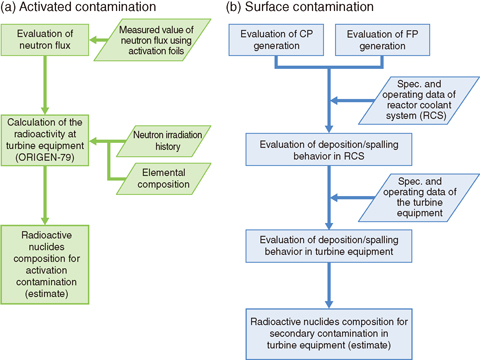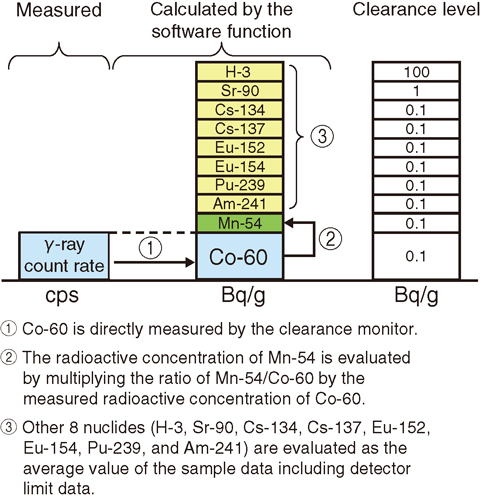
Fig.8-4 Flow diagram for evaluating contamination

Fig.8-5 Evaluation of Nuclide Concentration
At the Fugen Nuclear Power Plant (NPP), we plan to conduct appropriate classification of the waste according to the contamination level of the material of the plant to reduce the amount of radioactive waste and to rationally and efficiently promote dismantling work. For this reason, we are going to apply the clearance system to the material generated by the dismantling of the turbine system to reduce the radioactive waste amount as much as possible.
To properly operate the clearance system, the target nuclides for evaluation need to be selected accurately and a method for evaluating their radioactive concentration should be established.
To select the target nuclides for evaluation, we investigated both activated contamination and surface contamination with consideration of the plant characteristics.
For evaluating the activated contamination, we selected the main steam pipe, where neutron flux is the highest in the turbine system, as evaluation point considering the effect of activation by neutrons induced by the β-decay of N-17, which exists to a slight degree in the steam. Then, taking the neutron spectrum at this point, we calculated the estimated radioactivity for activated contamination in the turbine system using the calculation code “ORIGEN-79” (Fig.8-4(a)).
For evaluating the surface contamination, we regarded radioactive corrosion products (CP) and fission products (FP) as the origin of the contamination and the standardized migration behavior of CP and FP, and calculated the estimated radioactivity for surface contamination in the turbine system (Fig.8-4(b)).
As a result, we have selected 10 significant nuclides, including H-3, Mn-54, Co-60, Sr-90, Cs-134, Cs-137, Eu-152, Eu-154, Pu-239, and Am-241 as the target nuclides for evaluation based on the calculated radioactivity.
Then, to carry the clearance material out of “Fugen”, we need to establish an evaluation method for the radioactive concentration to judge reasonably and surely whether the radioactive concentration of the dismantled material in them is less than the clearance level.
As a result of measurements on actual contamination and so on and because “Fugen” has a very low degree of contamination outside of the reactor core, we can detect only Co-60 and Mn-54 in the turbine system. Co-60 is the primary nuclide of “Fugen” and Mn-54 correlates with Co-60.
The other eight nuclides were not detected in the turbine system. Therefore, we set the method of evaluating the radioactive concentration conservatively for such nuclides, i.e., calculating the average radioactive concentration including the detection limit in the measurements.
As a result, we were able to set the method for properly evaluating the radioactive concentrations in turbine system (Fig.8-5).
In the near future, using this evaluation method, we plan to start the application of the clearance system to the dismantled equipment of the Fugen NPP.
<Previous: 8 Research and Development Related to the Backend of the Nuclear Fuel Cycle and the Reprocessing of Spent Nuclear Fuel | Next: 8-2 >